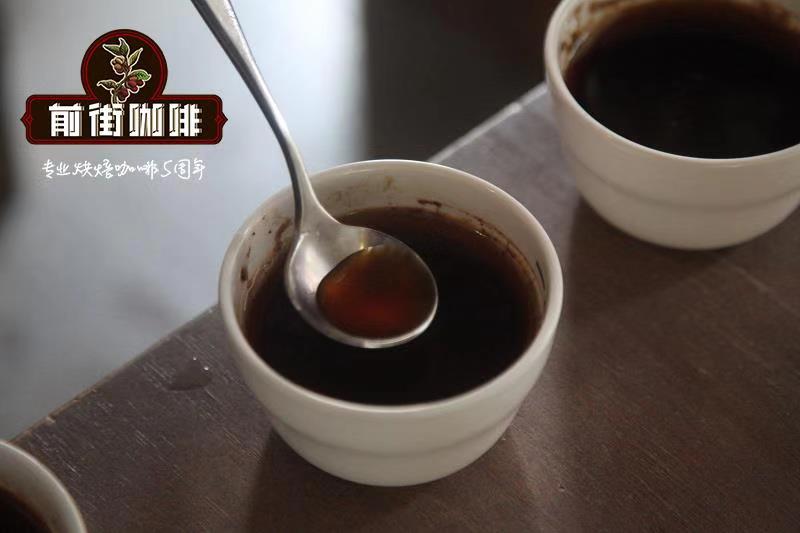Costa Rican Black Honey Coffee beans Tarazhu producing area Costa Rican Coffee Black Soul hand

Professional coffee knowledge exchange More coffee bean information Please pay attention to coffee workshop (Weixin Official Accounts cafe_style)
Front Street Coffee-Costa Rica Tara Pearl Region Introduction
The Republic of Costa Rice in southern Central America, its coffee quality is similar to Colombia coffee. Costa Rica Tarajoo coffee is famous for its full grains, ideal sourness and sweetness, with a hint of charming orange and unique berry flavor.
High-quality Costa Rican coffee is known as "extra-hard" and can be grown at altitudes above 1500 meters. Altitude has always been a problem for coffee growers. Coffee beans are better at higher altitudes, not only because higher altitudes increase the acidity of coffee beans and thus enhance flavor, but also because lower night temperatures at higher altitudes cause trees to grow slowly, thus making coffee beans more flavorful.
In addition, due to the high altitude drop caused by sufficient rainfall, the growth of coffee trees is also very favorable. However, while there are many advantages to growing coffee at higher altitudes, the additional transportation costs associated with it must be taken into account, which may well make coffee production unprofitable. Costa Rican coffee has adopted new technologies to increase efficiency, including the use of "electric eyes" to select beans and identify beans of irregular size.
Costa Rican coffee is full of particles, with ideal acidity and unique aroma. Costa Rica's high latitudes produce coffee beans famous in the world, rich, mild taste, coffee beans here are carefully processed, it is because of this, only high-quality coffee. Costa Rica is located south of San José, the capital of Tarasu, and is one of the country's most valued coffee plantations. Tarrazu is one of the world's leading coffee producers.
Costa Rican coffee varies in taste, although subtle, depending on the region where it is grown. Tarazu is a well-known emerging area with the best soils and high yields in Costa Rica. Generally speaking, in the same country and the same region, even if a variety of coffee is cultivated and produced, the same quality of coffee cannot be received every year. This is because coffee is susceptible to natural influences such as wind, rain and sun. Despite this, Tara Pearl can pride itself on its fresh berry, Fanta, and bright, dry coffee notes.
What flavor does Costa Rica sun treatment have? Front Street Coffee Share a Costa Rican sunburned black soul as an example to share
Parameters & methods: grinding degree: BG 5R (Chinese standard 20 sieve pass rate 58%), water temperature: 90℃, powder water ratio: 1:15.
Steaming with 30g of water for 32 seconds, filling water to 126g, continuing to fill water to 228g when the water level drops and is about to expose the powder bed, removing the filter cup when the water level drops and is about to expose the powder bed.(Steaming starts timing) Extraction time is 1 minute and 50 seconds.
Flavor: It smells of fermented wine and almond. The entrance is sour notes of dark plum, citrus and green apple. The middle part begins to emerge dark chocolate and nut flavor, and the tail part is light sugar sweetness. After the temperature drops, the entrance has tropical fruit-like sour and sweet taste. The middle part is creamy and honey-like sweetness. The finish has some fruit tea feeling.
END
Important Notice :
前街咖啡 FrontStreet Coffee has moved to new addredd:
FrontStreet Coffee Address: 315,Donghua East Road,GuangZhou
Tel:020 38364473
- Prev

Taste of Costa Rican coffee black honey introduction to the characteristics of Costa Rica black honey
Professional coffee knowledge exchange more coffee bean information please follow the coffee workshop (Wechat official account cafe_style) Qianjie Coffee-Costa Rican Stonehenge Manor Black Honey treatment introduction most of the world's coffee farms may be based on local place names or customs, Stonehenge Manor is naturally an example, Stonehenge Manor from
- Next

Harmful effects of Salvadoran coffee leaf rust
Professional Coffee knowledge Exchange more information on coffee beans Please follow the coffee workshop (official Wechat account cafe_style) since 2012, coffee leaf rust has ravaged much of Latin America, affecting El Salvador. From 2012 to 2014, total coffee production in El Salvador fell by 60%. The devastating impact on coffee and coffee growers is incalculable. Salva
Related
- Beginners will see the "Coffee pull flower" guide!
- What is the difference between ice blog purified milk and ordinary milk coffee?
- Why is the Philippines the largest producer of crops in Liberia?
- For coffee extraction, should the fine powder be retained?
- How does extracted espresso fill pressed powder? How much strength does it take to press the powder?
- How to make jasmine cold extract coffee? Is the jasmine + latte good?
- Will this little toy really make the coffee taste better? How does Lily Drip affect coffee extraction?
- Will the action of slapping the filter cup also affect coffee extraction?
- What's the difference between powder-to-water ratio and powder-to-liquid ratio?
- What is the Ethiopian local species? What does it have to do with Heirloom native species?

